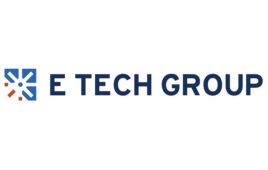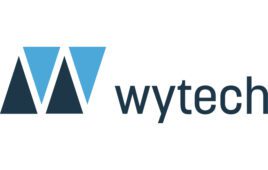Minnesota has the institutions and the talent to transform healthcare in the U.S. The question is whether the money will follow.
RxFunction makes wearable devices called “Walkasins” that help people with chronic health conditions prevent falls that can lead to serious injury. It took eight painstaking years, though, before the Eden Prairie, Minn.-based startup secured the $7.5 million in Series A funding it needed to prepare for the commercialization of its product: Shoe inserts that measure users’ foot pressure and enable immediate sensory cues to control balance.Lars Oddsson, RxFunction’s president and co-founder, suspects it took so long because a wearable device that acted as a sensory prosthesis was unusual for the Minnesota market. The company eventually brought in Tom Morizio, a former Medtronic executive, as CEO; Oddsson credits Morizio with figuring out how to package data and stories from patients and clinicians into a compelling story for prospective investors.
RxFunction is just one example of how Minnesota’s large medical device community is innovating in the digital healthcare space. But it also illustrates the challenges of transforming a medical device hub that has predominantly focused on traditional medical devices like pacemakers and heart valves into one that embraces and fosters new types of cutting-edge startups.
“I think the traditional Midwest medical device investor is so used to the traditional medical technology to come out of here,” Oddsson told Medical Design & Outsourcing in reflecting on RxFunction’s long journey. “It’s cardio. It’s some orthopedics. It’s mostly implants. We’re a wearable device. We’re a sensory prosthesis. It’s unusual. It’s new.”

RxFunction’s Walkasins are shoe inserts that measure users’ foot pressure and enable immediate sensory cues to control balance. [Image courtesy of RxFunction]
So far, funding for Minnesota medtech startups has been a mixed bag. California medical device startups raised more than $1.5 billion in venture capital last year, while their Minnesota counterparts only raised $220 million, according to the PwC and CB Insights’ MoneyTree report. Unlike the nation as a whole, quarterly medtech startup fundraising in the North Star State has yet to return to pre–Great-Recession levels.
“The funds are all in California,” said Randy Nelson, CEO of Evergreen Medical Technologies (St. Paul, Minn.), who has worked with medical device startups for more than a dozen years.
“California has a tendency for being a little more free-flowing with trying out things,” Nelson added. “I think they’re just more willing try out new things than we are in Minnesota.”
Times are a changin’
The Minnesota-based Medical Alley Association, however, points out that investment is growing when it comes to digital health. Widen the lens to include all of the life science companies in the state, and there were 26 that raised $112 million during the first three months of 2018, according to Medical Alley. More than half the companies were focused on tools and technologies related to consumer-focused healthcare.
Minneapolis-based Bind, for example, closed on a $60 million round during the first quarter to pioneer its on-demand health insurance offering. Another digital health startup in the state, Learn to Live, raised $4.3 million for its platform to provide remote access to high-quality mental health services.
Minnesota has also seen other recent successes related to both digital health and traditional medical device companies:
- Bright Health, a Minneapolis-based health insurance startup that works closely with carefully selected “care partners,” raised $160 million last year in a Series B round.
- Boston Scientific announced in March a $406 million deal for NxThera (Maple Grove, Minn.) and its Rezūm benign prostatic hyperplasia device, which uses steam to ablate excess prostate tissue.
- Ferring Pharmaceuticals of Switzerland recently inked a deal to acquire Rebiotix (Roseville, Minn.) and its platform of living drugs. Financial terms of the deal were not disclosed.
- Maple Grove, Minn.–based Inspire Medical Systems, a Medtronic spinout, is seeking to shake up sleep apnea treatment with a pacemaker-like system to treat obstructive sleep apnea; the company recently raised $108 million with its initial public offering.
- Virtual care company Zipnosis (Minneapolis) in April announced an agreement with Allina Health, a major Twin Cities healthcare provider, to update its online care offerings to better interact with patients.
- A Hennepin County Medical Center spinout called Hitch Health generated attention with a proprietary software solution that integrates electronic health record and ride share services, automatically syncing ride requests with medical appointments.
(Check out our hottest startups feature for more examples.)
When it comes to medtech startup success, pointing out differentiation is key, according to Jodi Hubler, managing director at Lehmhi Ventures (Wayzata, Minn.), which counts Bind in its portfolio. “There is opportunity for all sides – to stand out and to seek out innovation. It’s there for the taking.”
Back to its roots

Even back in the 1980s, Minnesota’s Medical Alley Association was touting the diversity of the state’s healthcare ecosystem. [Image courtesy of the Medical Alley Association]
“This actually has always been a healthcare hub,” said Shaye Mandle, the Medical Alley Association’s CEO.
The medtech cluster’s roots go back to the 1950s and ‘60s, when University of Minnesota surgeons including Dr. C. Walton Lillehei pioneered open heart surgery. Lillehei happened to meet Earl Bakken, who along with brother-in-law Palmer Hermundslie had started a business out of a garage repairing hospital equipment. Lillehei tasked Bakken with finding a replacement for the large, unreliable pacemakers then in use.
“Over four weeks in 1957, Bakken developed the first external, wearable, battery-powered pacemaker. It was used in the hospital on a patient the day after Bakken delivered it,” the Smithsonian Institution recounted in an article celebrating an exhibit about Minnesota’s Medical Alley.
Bakken and Hermundslie’s business eventually grew into Medtronic – now the world’s largest medical device company. Although its official headquarters moved to Dublin, Ireland, in 2015, the company is still run out of Fridley, Minn.
Manny Villafaña, a Bronx native who came to the Twin Cities decades ago, started out in the 1960s working on international sales for Medtronic. But he then took a risk and founded Cardiac Pacemakers Inc., which is now part of Boston Scientific’s Guidant business. CPI accomplished a feat that many had thought impossible: An implantable pacemaker that lasted more than a few years.
By the mid-1970s, Villafaña wanted to innovate in another area: Bileaflet mechanical heart valves. The resulting company was St. Jude Medical, which Abbott acquired for $25 billion last year. (Villafaña, now in his 70s, remains an active entrepreneur; his latest venture, Medical 21, is developing proprietary manufacturing technology to make artificial blood vessels for bypass surgeries.)
Beyond the several well-known medical device companies with large presences in Minnesota – Medtronic, Boston Scientific and Abbott – Minnesota also boasts a vast ecosystem of contract manufacturers, device testing outfits, designers, and regulatory and product development consultants to support the industry. The industry employed nearly 30,000 Minnesotans in 2016, according to the Minn. Dept. of Employment & Economic Development.
“We’re in the next natural evolution of a community that’s always been in the forefront of defining healthcare,” Mandle told us.
New sources of support for startups
While the fundraising environment for Minnesota startups may be tough when it comes to venture capital, the big, legacy medical device companies and major institutions such as Mayo Clinic stepped in over the past decade with more resources.
“The really big device companies … they’re way more engaged, they’re way more open-minded, they’re making acquisitions that … are interesting and exciting,” Mandle said.
Corporate money has been going toward the Medical Devices Center at the University of Minnesota and similar groups, according to Frank Jaskulke, the association’s VP of intelligence.
News came out in March that Boston Scientific joined Mayo Clinic and the University of Minnesota in backing startup accelerator Gener8tor and its medtech-focused Twin Cities accelerator called gBETA Medtech.
Next to Mayo Clinic in Rochester, work is underway on developer Mortenson’s 90,000-square-foot One Discovery Square, slated to open for occupancy next year. The biotech research, collaboration and innovation space is meant to provide companies both large and small the ability to locate close to Mayo Clinic, which will occupy a third of the building. The Mayo Clinic anchor tenants will include advanced radiologic technology, advanced laboratory diagnostic medicine and regenerative medicine, according to Dr. Clark Otley, medical director of the Dept. of Business Development at Mayo.“We hope that soon after the building is opened, another one will go up,” Otley said.
Discovery Square is part of the 20-year Destination Medical Center project, in which $585 million in state and local government infrastructure funds are expected to leverage about $5 billion of private investment in Rochester.
Overall, Mayo Clinic in recent years has sought to more efficiently commercialize its innovations. Its business development operation is now a one-stop shop for companies of all sizes seeking to collaborate with the health provider.
“We don’t ever want to feel comfortable and feel like we’ve got it figured out,” explained chairman James Rogers III. “There’s a lot that we can learn from others. Having more people closer to us who we can learn from can only help us. We’ve got to be constantly getting better.”
(Find out more from Otley and Rogers at DeviceTalks Minnesota, June 4–5, 2018 in St. Paul, Minn.)
A true medtech community
Nelson at Evergreen may lament that the money is in California, but he also thinks Minnesota has an impressive advantage: “The knowledge base is second to none.”
“I think it’s better than any place in the United States, actually. In California, there’s a lot of talent. In Boston and New England – there’s a lot of talent. But here, it’s so well-utilized. People work together so well. It’s a better situation,” Nelson said.
For Nelson, Minnesota feels like a “medical device neighborhood.”
It speaks to the strength of the Minnesota hub that the University of St. Thomas’ Opus College of Business in Minneapolis is launching a one-year accelerated master’s degree program in healthcare innovation. The program is targeted toward first-time supervisors in the healthcare industry, as well as people in other industries interested in innovating in healthcare. The three legs of the program are patient customer experience, innovation and lean execution.
Dr. Gwenyth Fischer, director of The Pediatric Device Innovation Consortium at the University of Minnesota, thinks the seven-year-old group’s location gives its inventors an edge. The PDIC is able to focus not only on funding but also on getting doctors and other academics with innovative ideas linked with Twin Cities experts to get their concepts commercialized.
“It’s a huge medical device community, but it’s sort of a small person community, in that I have gotten so much individual help and assistance and people connecting me to other people,” Fischer said. “Everybody knows everybody in this town, which I think is a major resource. People are very willing to help. You don’t see a cutthroat attitude here.”










Chris, as you may not know my family company Scanlan International is the oldest medical device company in Minnesota( in our 98th year) and a founder of Medical Alley. My grandfather started working with Will & Charlie Mayo on surgical instruments that changed the course of surgery. As we move into the 4th generation of family ownership, we continue design surgical instruments used in the most specialized surgeries throughout the world ! As a kid I met the “giants” Walt Lillehie,Richard Varco,Earl Bakken, my dad & others in my grandparents kitchen where they would gather for hours working, thinking,designing, discussing & laughing ! The future remains bright in Medical Alley !
That’s a great story, Tim. Thanks for sharing!